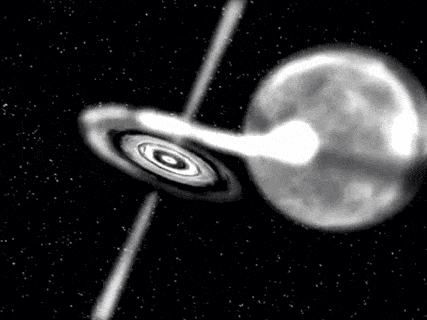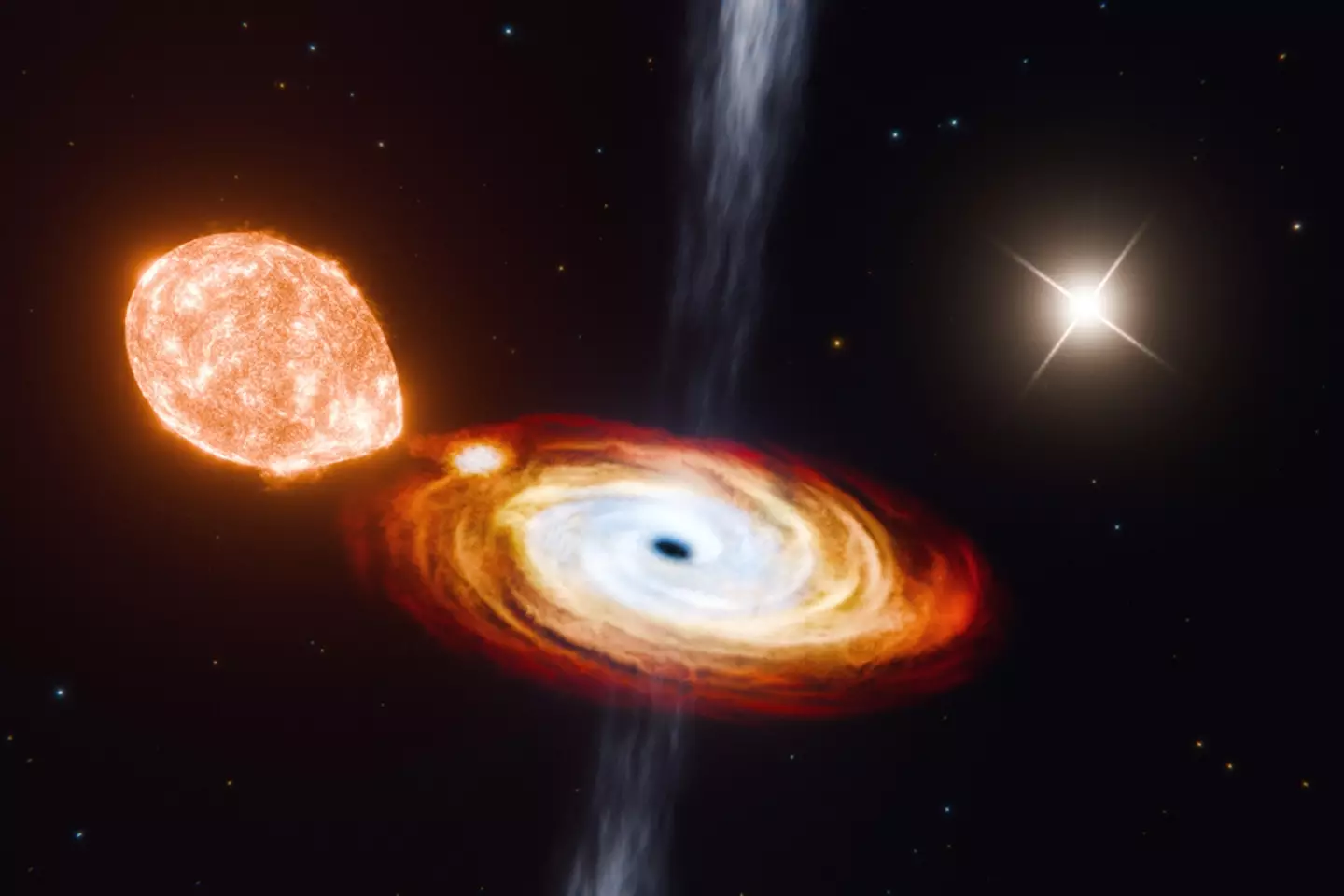Scientist in the US have discovered a unique “triple black hole” system, featuring a central black hole with two orbiting stars, which defies the typical black hole pair structure.The two stars orbit the black hole at vastly different speeds: one star completes its orbit every six and a half days, while the other takes approximately 70,000 years.This rare find suggests black hole formation may be more complex than previously thought, challenging the idea that black holes only form from isolated star explosions (supernovae).MIT and Caltech researchers discovered the system unexpectedly, shedding new light on black hole evolution and prompting questions about the frequency of such triple configurations.This system reveals a delicate gravitational “string” connection between the stars, sparking further curiosity about the dynamics of other potential black hole triple systems in the universe.A “triple black hole” system orbits in extremes: one star takes 6.5 days, another 70,000 years.

In a groundbreaking discovery, physicists from MIT and Caltech have observed an extraordinary cosmic structure—a rare “triple black hole” system. Unlike typical black holes, which often form pairs with a nearby companion star or object, this system, officially named a “black hole triple,” comprises one central black hole orbited by two separate stars. This unique structure is the first of its kind observed, with findings published in the scientific journal Nature.
The central black hole in this system is currently in the process of consuming a smaller star, which spirals around it in close proximity, completing an orbit every 6.5 days. Alongside this star, a second, much farther star also orbits the black hole, albeit at an astonishing distance. This outer star takes approximately 70,000 years to complete a single orbit, a striking contrast to the weekly orbit of the inner star. This pairing is not coincidental; the stars are bound to the black hole by gravitational forces, which has surprised scientists due to the extreme distance of the outer star.
Kevin Burdge, a Pappalardo Fellow at MIT and one of the study’s lead authors, explains the extraordinary nature of this system, suggesting that such a configuration raises exciting questions about the possible existence of other similar “triple” systems. Burdge noted that the stars appear to be following each other in a stable orbit due to a “weak string of gravity” binding them together. This discovery not only challenges scientists’ understanding of black hole formation and evolution but opens new lines of inquiry into how black holes interact with multiple orbiting bodies over vast distances.
This black hole likely formed in the aftermath of a supernova, a violent explosion marking the death of a massive star. Such an event releases an immense amount of energy and causes the remaining stellar material to collapse into a black hole. Scientists theorize that the explosion may have “kicked” the far-off star into a distant orbit, which it has maintained ever since.

Traditionally, black holes are thought to form from such explosive supernova events, but this unusual system presents a twist to that understanding. The discovery suggests the possibility of other formation mechanisms or circumstances that could give rise to similar configurations, calling into question existing assumptions about black hole evolution. According to Burdge, the rarity and stability of this triple system make it an exciting subject for further research.
The finding also highlights the importance of continued observation and research. For astronomers, the discovery of this black hole triple system serves as a reminder that the cosmos may hold more complex black hole formations than previously thought. Future studies could potentially reveal similar configurations in other parts of the universe, broadening our understanding of black hole dynamics and gravitational relationships in space.
As astronomers look for more of these “black hole triples,” this discovery may serve as a foundation for understanding the gravitational forces that can bind such distant objects. With new telescopes and technologies, scientists are now better equipped to find and study these elusive cosmic structures, unraveling more mysteries about the formation and behavior of black holes.















No comments